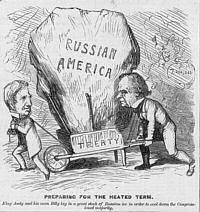Roosevelt Corollary
This political cartoon is about the Roosevelt Corollary. As we can see, Roosevelt is extremely larger in size than everyone else. He is digging what seems to be the pama Canal as he gets rid of all the Europeans in the way. The author uses exaggeration as he draws Roosevelt as a huge person. The cartoonist also used labeling when he labelled the Panama Canal at the bottom of the page. The cartoonist believed that the Europeans should have not been invading the Panama Canal. This cartoon does not support my view on imperialism because Roosevelt was very controlling with acquiring the canal.
Works Cited
https://imperialsm-by-brady.wikispaces.com/U.S.+Economic+Imperialism+in+Latin+America





